 W
WThe following is a list of artifacts—objects created or modified by human culture—that are significant to biblical archaeology.
 W
WThere are hundreds of catacombs in Malta, principally found in the neighbourhood of Citta Vecchia, the old capital of the Island. The catacombs are very small, but are in good preservation.
 W
WThe list of coin hoards in China lists significant archaeological hoards of coins, other types of coinages or objects related to coins discovered in China. The history of Chinese currency dates back as early as the Spring and Autumn period, and the earliest coinages took the form of imitations of the cowrie shells that were used in ceremonial exchanges. During the Warring States period new forms of currency such as the spade money, knife money, and round copper-alloy coins were introduced. After unification of China under the Qin dynasty in 221 BC the Ban Liang (半兩) cash coin became the standard coinage, under the Han dynasty the Wu Zhu (五銖) cash coins became the main currency of China until they were replaced with the Kaiyuan Tongbao (開元通寳) during the Tang dynasty, after which a large number of inscriptions were used on Chinese coinages. During the late nineteenth century China started producing its own machine-struck coinages.
 W
WThe list of coin hoards in Vietnam comprises significant archaeological hoards of coins, other types of coinages or objects related to coins discovered in Vietnam. The history of Vietnamese currency, independent from China, dates back to the Đinh dynasty period with the Thái Bình Hưng Bảo (太平興寶), produced from 970 to 979. The Vietnamese produced cash coins similar to the ones produced in China and circulated alongside Chinese, Japanese, Korean, and Ryukyuan cash coins brought into the country through international trade. Cash coins continued to be produced in Vietnam until the 1940s under the Nguyễn dynasty. Through international trade foreign currencies such as Spanish dollars and Mexican reals were brought into the country by merchants and these coins would continue to circulate in Vietnam until the French colonial administration outlawed their usage on 1 January 1906 in favour of their own coinage, while Vietnamese cash coins were permitted to continue circulating. Despite the presence of coinages barter persisted until the 20th century. Following its declaration of independence in 1945 the Democratic Republic of Vietnam started issuing its own currency in 1946, while allowing cash coins to circulate until 1948. In 1952 the piastre was abolished and replaced with the South Vietnamese đồng in the south in 1953. Following Vietnamese reunification in 1976 the North Vietnamese đồng and Liberation đồng would continue to circulate in the Socialist Republic of Vietnam until May 2, 1978, when they were replaced by a new national currency.
 W
WThis is a list of Hopewell sites. The Hopewell tradition refers to the common aspects of the Native American culture that flourished along rivers in the northeastern and midwestern United States from 200 BCE to 500 CE. The Hopewell tradition was not a single culture or society, but a widely dispersed set of related populations that were connected by a common network of trade routes, known as the Hopewell Exchange System.
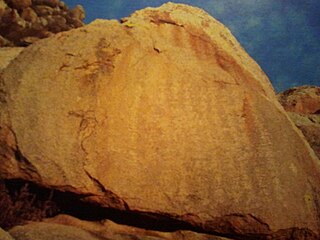 W
WThe list of Jurchen inscriptions comprises a list of the corpus of known inscriptions written in the Jurchen language using the Jurchen script. There are ten monumental inscriptions, mostly dating to the Jin dynasty (1115–1234), but the latest monument dates to the early Ming Dynasty (1413). There are also a number of short Jurchen inscriptions on portable artefacts such as mirrors, seals and paiza. In contrast with inscriptions in Khitan scripts, there are no known examples of stone-inscribed epitaphs in the Jurchen script.
 W
WThe list of Khitan inscriptions comprises a list of the corpus of known inscriptions written in the Khitan large script and the Khitan small script. These two scripts were used by the Khitan people in northern China during the 10th through 12th centuries for writing the extinct Khitan language. The Khitan language was in use during the Liao Dynasty (907–1125), the Kara-Khitan Khanate (1124–1218) and the Jin dynasty (1115–1234), but the last recorded Khitan speaker, Yelü Chucai, died in 1243, and the language probably became extinct soon afterwards.
 W
WThis list of Maya sites is an alphabetical listing of a number of significant archaeological sites associated with the Maya civilization of pre-Columbian Mesoamerica.
 W
WThis is a list of Mesoamerican pyramids or ceremonial structures. In most cases they are not true pyramids. There are hundreds of these done in many different styles throughout Mexico and Central America. These were made by several pre-Columbian cultures including the Olmecs, Maya, Toltecs, and Aztecs. In most cases they were made by city states that created many structures in the same style. The style for each city state is usually different. These are usually made out of stone and mortar but some of the earliest may have been made out of clay.
 W
WThis is a list of Mississippian sites. The Mississippian culture was a mound-building Native American culture that flourished in what is now the Midwestern, inland-Eastern, and Southeastern United States from approximately 800 CE to 1500 CE, varying regionally. Its core area, along the Mississippi River, stretched from sites such as Cahokia in modern Illinois, the largest of all the Mississippian sites, to Mound Bottom in Tennessee, to the Winterville site in the state of Mississippi. Temple mound complexes further extend from Aztalan in Wisconsin to Crystal River in Florida, and from Fort Ancient now in Ohio to Spiro in Oklahoma. Mississippian cultural influences extended as far north and west as modern North Dakota.
 W
WThis is a list of monoliths organized according to the size of the largest block of stone on the site. A monolith is a large stone which has been used to build a structure or monument, either alone or together with other stones. In this list at least one colossal stone over ten tons has been moved to create the structure or monument.
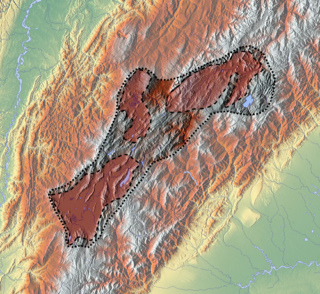 W
WThis is a list of Muisca and pre-Muisca archaeological sites; sites on the Altiplano Cundiboyacense, where archaeological evidence has been discovered of the Muisca and their ancestors of the Herrera, preceramic and prehistorical periods.
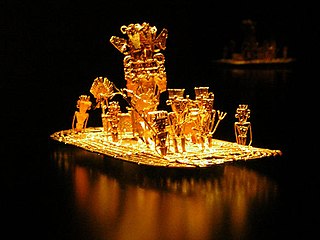 W
WThis is a list of museum collections pertaining to the Muisca. Most of the Muisca artefacts are housed in the Gold Museum, Bogotá, the museum with the most golden objects in the world. Other findings are in the Archaeology Museum in Sogamoso and in the Archaeology Museum of Pasca. Few artefacts are on display outside Colombia. Most of the objects outside Colombia are tunjos; small offer pieces part of the Muisca religion.
 W
WThis is a list of institutes providing research into the Muisca. The three most important universities in Bogotá have a department of anthropology to study the indigenous cultures of Colombia. While international research compared to the Inca, Aztec and Maya is quite limited, various other universities have provided knowledge about the Muisca and their culture.
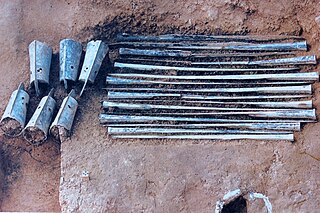 W
WThe term "National Treasure" has been used in Japan to denote cultural properties since 1897. The definition and the criteria have changed since the introduction of the term. These archaeological materials adhere to the current definition, and have been designated national treasures since the Law for the Protection of Cultural Properties came into effect on June 9, 1951. The items are selected by the Ministry of Education, Culture, Sports, Science and Technology based on their "especially high historical or artistic value". The list presents 48 materials or sets of materials from ancient to feudal Japan, spanning a period from about 4,500 BC to 1361 AD. The actual number of items is more than 48 because groups of related objects have been combined into single entries. Most of the items have been excavated from tombs, kofun, sutra mounds or other archaeological sites. The materials are housed in museums (30), temples (9), shrines (8) and a university (1) in 27 cities of Japan. The Tokyo National Museum houses the greatest number of archaeological national treasures, with 7 of the 48.
 W
WThis is a list of archeological sites where remains or tools of Neanderthals were found.
 W
WThis is a list of Paleolithic sites in China. They are sorted in chronological order from the earliest founding to the latest:
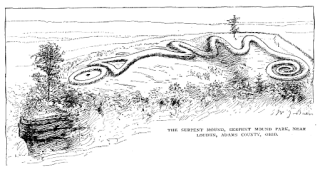 W
WNorth American archaeological periods divides the history of pre-Columbian North America into a number of named successive eras or periods, from the earliest-known human habitation through to the early Colonial period which followed the European colonization of the Americas.
 W
WThis list of pre-Columbian cultures includes those civilizations and cultures of the Americas which flourished prior to the European colonization of the Americas.
 W
WThis is a list of archaeological and artistic sites of Sardinia, Italy: